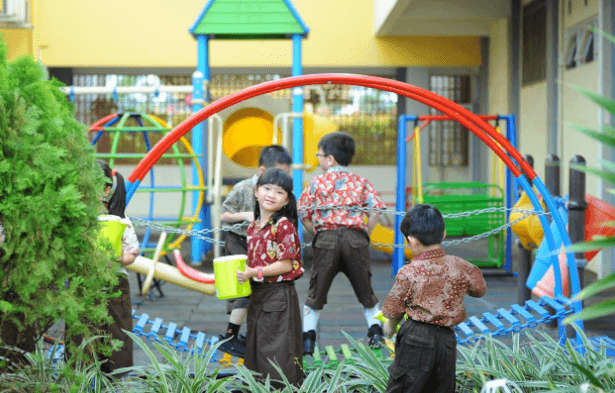5 Things to Keep In Mind When Designing a New Playground

Creating a safe, interesting, and welcoming playground for kids to play and explore is an exciting project that needs careful thought and preparation. Whether you’re building a playground from the ground up or remodeling an old one, there are a few important things to consider to make sure it works well.
1. Safety Standards and Regulations
Safety must come first when creating a new playground. To reduce the likelihood of mishaps and injuries, compliance with safety standards and laws is crucial. This entails abiding by the rules established by groups like the American Society for Testing and Materials (ASTM) and the Consumer Product Safety Commission (CPSC). Take into account elements like the right amount of space between play structures, suitable materials for fall surfaces, and the addition of safety elements like barriers and guardrails. By carrying out a comprehensive risk assessment and seeking advice from safety specialists, you can make sure that your playground satisfies safety requirements and offers kids a safe space to play and explore.
2. Inclusive Design for Accessibility
When creating a new playground, inclusivity, and accessibility are crucial factors to take into account. To ensure that everyone can take part in play activities, it’s critical to provide a setting that is friendly and accessible to kids of all abilities. Children with a variety of needs and skills can be accommodated by including features like inclusive sitting places, sensory-rich play areas, and wheelchair-accessible ramps. Furthermore, take into account the playground’s structure and design to make sure kids with sensory issues or mobility impairments can easily navigate it. Putting inclusive design principles first can help you build a playground that makes kids feel like they belong and lets them play and engage with one another without any problems.
3. Age-Appropriate Play Zones
Creating play zones with good playground equipment that are suited for different age groups is a crucial aspect of constructing a new playground. Since the developmental requirements and capacities of children vary, it is essential to offer distinct facilities designed for each age group. Think about creating separate play areas on the playground for young children, preschoolers, and school-age kids, each with toys and activities appropriate for their developmental stage. While larger children can benefit from climbing structures, swings, and more difficult play possibilities, toddler-friendly spaces could have low-height structures, soft surfaces, and interactive sensory play features. You can guarantee that kids of all ages have access to developmentally, cognitively, and socially appropriate activities by designating specific play areas.
Read also Understanding and Troubleshooting NSCocoaErrorDomain Errors in macOS and iOS
4. Integration of Natural Elements
Children can play in a more engaging and exciting setting and have a better play experience when natural features are included in the design of a new playground. For shade, to encourage sensory exploration, and to foster a feeling of being part of nature, think about adding plants like trees, bushes, and other flora. Playground designs can benefit from the addition of texture and visual appeal provided by natural materials like wood, stone, and gravel. Incorporating elements like sandboxes, water play spaces, and nature trails can also promote creative and adventurous play and a greater understanding of the environment.
5. Flexibility for Creative Play
Lastly, it’s critical to provide possibilities for imaginative and creative play while building a new playground. While having organized play equipment is necessary, allowing children to have unstructured playtime lets them use their imaginations and creativity to create their games and activities. Open play spaces, loose pieces, and mobile things that kids can use and engage with in different ways are examples of features you should think about including. By facilitating creative expression and discovery, the playground becomes a dynamic and captivating environment where kids can learn and improve their social skills, cognitive abilities, and problem-solving abilities.
Conclusion
When creating a new playground, safety, inclusiveness, age-appropriateness, natural aspects, and chances for creative play must all be carefully considered. Designers can construct a playground that fits the requirements of children of all ages and abilities while fostering social, cognitive, and physical development by putting these important issues first and working with stakeholders. Therefore, keep these crucial factors in mind when designing a playground for your neighborhood, school, or backyard to create a warm and stimulating location where kids can grow and develop.





